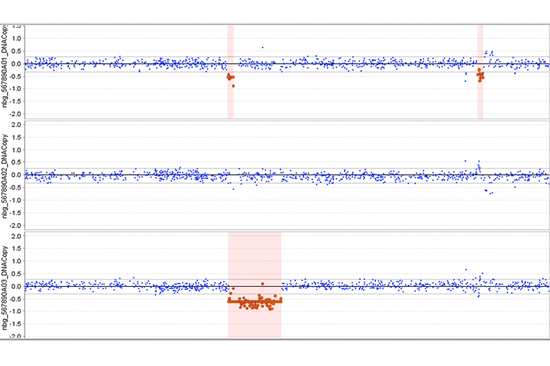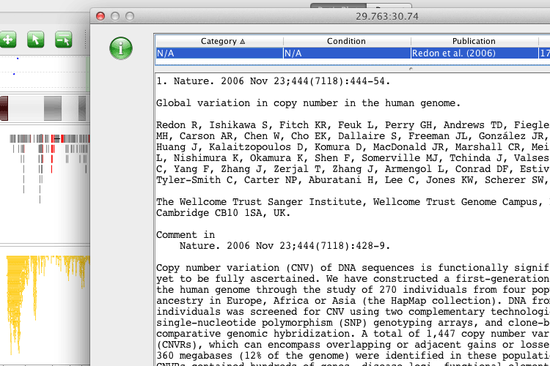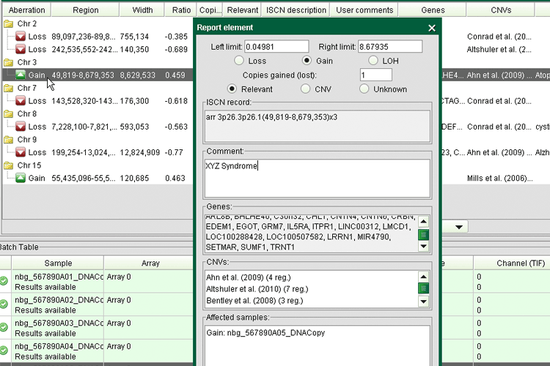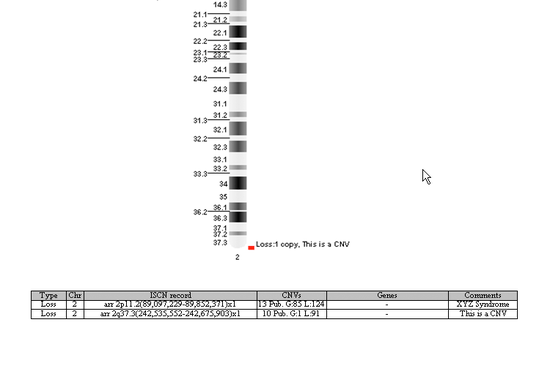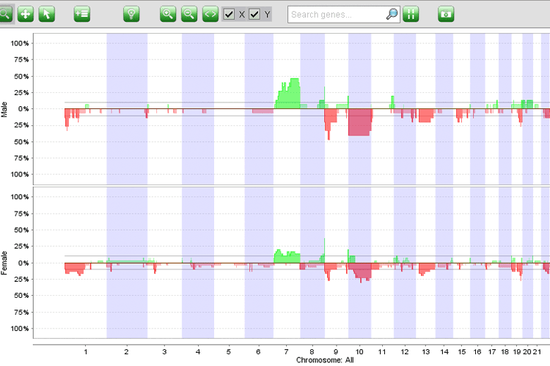infoQuant's CGH Fusion® is the leading software for comprehensive analysis of genomic variants across various technologies and platforms. CGH Fusion is the ultimate end-to-end data analysis solution that facilitates processing of large batches of array CGH, SNP array, WES and WGS data taking productivity of a clinical diagnostic lab to the next level. With CGH Fusion you can not only analyze large sets of samples with a single click, but also compare results across samples, detecting common DNA anomalies quickly and reliably.
Features
Unsupervised batch processing
Batch data analysis can be executed on data generated with aCGH, SNP array or sequencing platforms for dozens or hundreds of samples with a single mouse click. infoQuant's platform-specific approach to data normalization and segmentation allows you to process sets of array data on a standard PC producing automated genomic variant calls such as gain/loss, LOH etc for the whole dataset within minutes.
Centralized genomic variant analytics
With CGH Fusion clinical laboratories can benefit from centralized processing of array data reducing their risk of human error. Analysis results from a specific batch are automatically saved locally, to a local or shared hard drive or to a database, where they can be reviewed and interpreted later on. This type of organization in data processing is especially useful for laboratories with high diagnostic throughput.
Compatibility with major array platforms
CGH Fusion is compatible with data formats used by all major array and sequencing platforms: ThermoFisher, Agilent, Roche, Illumina and more. It is the only array software supporting oligo array and sequencing platforms with the highest level of precision and interaction. Such platform independence enables researchers and clinicians to compare genomic variation regions for array datasets generated by different labs or even different institutions. CGH Fusion will keep supporting your Copy Number analysis needs no matter which array or sequencing platform you decide to migrate to in the future.
Unprecedented level of data interaction
CGH Fusion was designed for unprecedented data interaction experience and ease of use. This software was built to help you navigate across different samples and to let you drill any genomic anomaly down to the probe level of an individual sample for instant visualization. For arrays CGH Fusion also allows you to visually compare probe-level data between samples and to visualize both copy number and allele-specific measurements at the same time. Its reporting interface is enriched with gene information, disorder associations, Gene Ontology terms and publicly available CNV tracks. All that information is right there at your fingertips to provide the most effective path to clinical interpretation of the results.
Custom-built CNV tracks
CGH Fusion is the only array copy number software that can turn a tedious procedure of accumulating in-house sets of known copy number variants into a simple and interactive task. It allows its users to build sets of normal or phenotype-specific Copy Number Variants (CNVs) utilizing large collections of samples. Seamless integration with cghfusion makes then custom CNV tracks available for reference in routine diagnostic tests. This facilitates constant interaction between research and diagnostic processes within an institution.
Power of data fusion across samples
CGH Fusion helps geneticists identify and visualize variants such as gain/loss and LOH regions that are common across patients with similar medical conditions constructing comprehensive copy number patterns. Using CGH Fusion you can also easily compare genomic variations across different groups of patients producing valuable biological insights within minutes. Data from different array and sequencing platforms can be easily compared in CGH Fusion within the same dataset or across different datasets.
Screenshots
White Papers
Efficient Analytics for Clinical Array-Based Copy Number Screening
